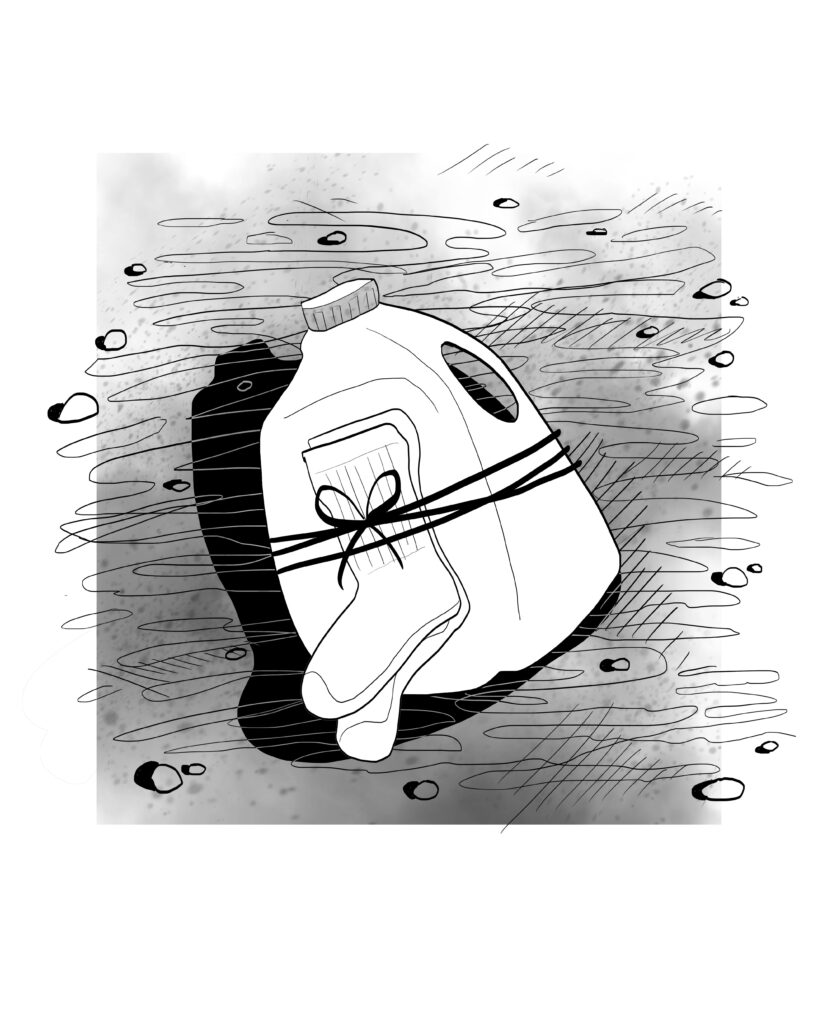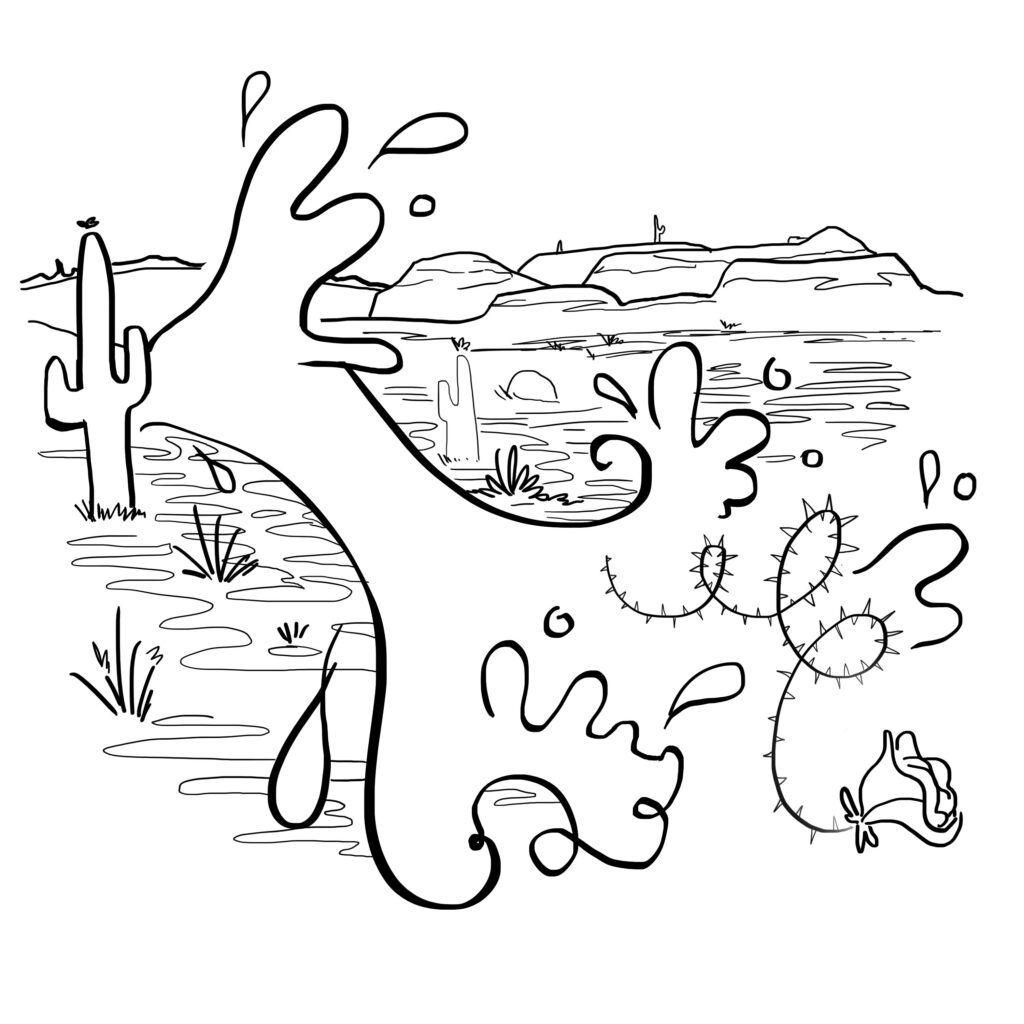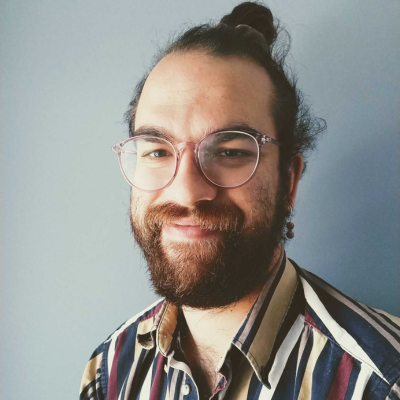The following is an excerpt from Fragments, the new magazine from Emor.
by Ethan Aronson
The border wall between Sasabe and Nogales is full of gaps. Some are just a few feet wide, as if a construction crew botched a measurement. Others last for miles, usually in more mountainous terrain. Most, though, are wherever there are washes — the usually dry riverbeds that flood with water in the summer monsoon season. Border Patrol knows that if the washes were obstructed by a wall, each July the water would pound at the cement, destroy the border road, and perhaps bring sections of the wall down completely. So for now, where there are washes, there are gaps.
The first mile from the border is the most heavily militarized part of the desert. Border Patrol agents circle the hills by horse, truck, and helicopter; anti-immigrant militias camp out on hilltops with binoculars and rifles; cartel scouts whip around in ATVs. Migrants, most of whom have already traveled thousands of miles from Guatemala, Honduras, and El Salvador, hide out in those same washes, moving only by moonlight.

I’m with a small crew of humanitarian aid workers associated with No More Deaths. We’re here to leave our stashes of beans, granola bars, socks, blankets, and gallons of water with encouraging messages for folks crossing – “Hasta un mundo sin fronteras”(until a world without borders) and “que Dios los bendiga” (may God bless you) are my favorites. Maria, a domestic violence survivor from El Salvador who had wandered for four days in the desert alone before finding our camp, told us those gallons and messages gave her the strength to keep walking.
The biblical resonances are unavoidable. On water breaks, I daven mincha, praying that God help these people fleeing violence, impoverishment, and oppression to find food and water on their desert journeys. Some migrants even pass a holy mountain — the striking peak Baboquivari, where Tohono O’odham tradition says the Creator I’itoi makes his home.1
In some ways, immigration justice is the issue the American Jewish community has mobilized around the most. Hundreds of synagogues partner with HIAS and Federations in refugee resettlement work, and Hebrew school teachers across the country teach Jewish children to “love the stranger, because you were strangers in Egypt.”
But out here in the desert, this generic pro-immigrant sentiment does not feel like nearly enough. Migrants are shot at, hunted with dogs, crowded into freezing detention centers, separated from their families, and driven towards more and more dangerous crossings. The wall, expanded by Republican and Democratic administrations alike, is part of what Harsha Walia describes as the “global apartheid wall,” keeping poor brown people out (except when they’re needed as cheap, deportable labor) and keeping white and/or rich people happy.2 Border violence extends south to the Mexico-Guatemala border, where the U.S. supplies surveillance technology and trains the Mexican army to round up Central Americans, and north to every county in the U.S. where ICE lies in wait at construction sites and school drop offs to rip parents away from children.
Generally favorable views towards immigrants and calls for “immigration reform” will do little for most desert crossers like Maria. The violence in the desert needs to be met with a more prophetic vision: the fundamental freedom of movement of all people. Hasta un mundo sin fronteras.
Voices within rabbinic tradition range drastically on this issue, including texts that warn against the foreigner’s negative cultural influence, assert the importance of national boundaries, and permit cruelty towards migrants on the basis of national security.3 And yet, writing before our modern militarized border regime made it almost impossible to imagine, the rabbis often understand freedom of movement as a given, and articulate this freedom within Jewish traditions around God, safety, and land.

One famous text explains that God created humans from the four corners of the Earth,
“so that if one comes from the east to the west and arrives at the end of his life… it will not be said to him, ‘This land is not the dust of your body, it’s of mine. Go back to where you were created.’ Rather, every place that a person walks, from there they were created and from there they will return.” (Yalkut Shimoni on Torah 13:2)
The 14th century law code called the Tur rejects economic protectionism by claiming it is pashut, self-explanatory, “that a person can live wherever they want and the citizens of the town cannot prevent them.”(Choshen Mishpat, 156) This kind of legal reasoning often invokes the actual Owner of the land: “The land is Mine,” God reminds us in Leviticus 25:23, “and you are all strangers and tenants before me.” A well-known movement rallying cry combines a line from Elie Weisel with an appeal to indigenous sovereignty: “No human is illegal on stolen land!” A Jewish voice might reach the same outcome from different reasoning: “No human is illegal on land belonging to God.”’
In the Talmud (Bava Batra 7b), Reish Lakish and Rabbi Yochanan argue that sages are exempt from paying taxes for a wall around a city. Rabbi Yochanan cites the verse from the Song of Songs: “‘I am a wall and my breasts are like towers.’ I am a wall– this is Torah. And my breasts are like towers– these are Torah scholars.” In Rabbi Yochanan’s view, for those who study and live Torah — the Torah that tells us 36 times to love or protect the immigrant (Talmud, Bava Metzia 59b) — earthly walls and fortifications become entirely unnecessary. This realization is superimposed over the image from Song of Songs of two lovers, usually understood to be God and Israel, in poetic and amorous dialogue. In other words, this text suggests that rejecting the supposed safety of walls for the holiness of Torah is fundamental to encountering the Divine.
In the desert, a strange image enters my mind. Instead of miles of concrete and steel, I imagine a place of learning, where people come from all over to study Torah, to learn from the land and from each other. Where people like Maria could flee violence, and be welcomed with singing and chicken soup, and share whatever revelations came to them in the desert. Where members of the Tohono O’odham nation would wave as they pass by on their centuries-old salt pilgrimage to the Gulf of California, without the interruption of an imaginary line. Usually this vision seems absurd, the logic of border violence too powerful, the concrete too strong.
But other times, I imagine justice welling up suddenly, flooding like the washes in monsoon season, rushing from the hillsides as a mighty stream, and cleansing the desert of walls.
1The Tohono O’odham people have lived continuously in what is now called Arizona and Sonora since well before the arrival of the Spanish in the 1500s. The U.S.-Mexico border divides their traditional territory in two.
2See Harsha Walia, Border and Rule (Chicago: Haymarket, 2021), 77-92.
3For example, see Rashi on Deuteronomy 33:25 or in the Shulchan Aroch, Orach Chayim 329:6. A good summary of these sources can be found in Nochum Mangel and Shmuel Klatzkin’s “A Torah Perspective on National Borders and Illegal Immigration.” (Chabad.com, 2012)

Ethan Aronson (he/him) is the Campaign Director of Never Again Action, a Jewish-led mobilization against the persecution, detention, and deportation of immigrants in the United States. He lives on Council of Three Fires land in Chicago and davens at the Rose Crown Minyan. Ethan loves cooking elaborate vegan food, singing with friends, and jumping in the lake. He volunteered as a No More Deaths ‘month-long’ in southeast Arizona in January of 2022.
